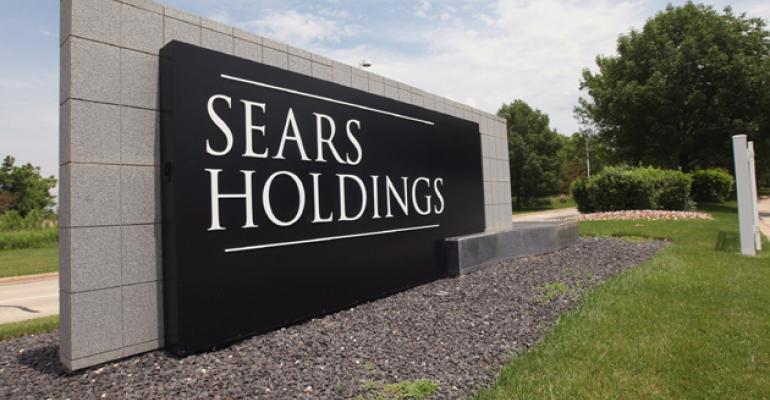Sears Holdings announced it is moving forward with a plan to spin off 200 to 300 stores into a REIT. The Hoffman Estates, Ill.-based company, which operates Sears and K-mart stores, says the formation of the REIT will occur during the first half of the year. Chairman and CEO Edward S. Lampert expects the company to generate $2 billion or more in proceeds, yet industry experts question whether the move will solve Sears’ problems.
“I don't see how the REIT spinoff would help Sears in regards to being more competitive in today’s retail world,” says Jason Lail, manager of real estate research for SNL Financial. “And without new tenants in place, I don’t know how the REIT would thrive, when its main competitors would be retail REITs with a [highly diversified] tenant base and able to charge a good bit more per square foot to boot.”
Sale-leaseback deal
Sears intends to sell its stores into the REIT in the form of a sale-leaseback transaction. Lampert says the completion of a REIT transaction “has the potential to significantly transform our capital structure toward one that is more flexible, long-term oriented and less dependent on inventory and receivables.”
However, a sale-leaseback agreement with a REIT could create additional financial stress on the retailer, says Andrew Maguire, a shareholder with Pennsylvania-based McCausland Keen & Buckman who counsels REITs and other publicly-traded companies, as well as privately held entities and nonprofits.
“Although cash from the sale can be put back into the company, a sale-leaseback would add an additional financial obligation [the payment of rent] to the retailer’s existing operational expenses,” he explains.
Lack of interest in retailer spinoffs
Sears Holdings’ certainly isn’t the only company to sell off its real estate assets, either by forming a REIT or another private venture.
“Sears’ decision to undertake a REIT spinoff might be part of an emerging trend—casino operator Pinnacle Entertainment and gym operator Life Time Fitness have both recently announced that they are exploring similar plans,” Maguire says.
But there aren’t many examples of retailers that have executed a REIT spinoff strategy. “The investment community hasn’t expressed much interest from the REIT side of the table for retailers,” says Paul Morgan, managing director and senior equity analyst on MLV & Co.’s REIT research team. “We’ve seen more health care companies spin off their real estate assets and then lease them back to the parent company.”
Morgan can only think of one recent example of a retailer that has successfully transferred its real estate holdings into a REIT: Canadian food retailer Loblaw Companies Ltd. The company created Choice Properties REIT in 2013, and the REIT’s portfolio consists of roughly 39.9 million sq. ft. in 475 properties, both supermarket-anchored and standalone supermarkets.
“What made Choice Properties appetizing to investors was that it owned shopping centers too,” Morgan explains. “It was more diversified and similar to other retail REITs than single-tenant players.”
Struggling tenant
Experts question the viability of a Sears REIT based on the fact that it will have only one tenant—a tenant that isn’t doing well. Sears Holdings’ revenue for 2014 was down approximately $2.5 billion year-over-year. About $2.1 billion of the decline was due to the deconsolidation of Sears Canada, the spinoff of the Lands’ End business, and the closure of 234 underperforming stores.
On a comparable basis, Sears Holdings’ revenue declined by about $370 million, with $313 million of this decline due to comp store sales performance. During the fourth quarter, comparable store sales declined by 4.4 percent.
“The fundamental problem with monetizing your real estate is that the stores that generate the most revenue are also the ones with the best locations,” Morgan points out.
Lampert says Sears Holdings hopes to maintain a presence in each spun-off location while still having the flexibility to shutter locations if they’re unprofitable in the future. Moreover, he contends that many locations can be repurposed with or without Sears Holdings as an anchor, “which would give the REIT the potential for value creation as well as downside protection if Sears Holdings were unable to continue to operate certain stores profitably.”
Morgan says repurposing and redeveloping Sears space could be very lucrative. “The problem is, no one knows when or if these stores would go away,” he points out. “Investors might have to wait a very long time for these stores to be optimized.”
The age and condition of the Sears locations also need to be considered. “There are concerns about strong needs for renovations at many Sears locations, which could lead to significant cap-ex investment in the future by the REIT,” Lail points out.
Morgan says there are more things to dislike about a Sears REIT than to like about it, from an investor perspective. Nonetheless, he expects the REIT spinoff to attract a diverse group of investors.
“There’s a price for everything, and I think most people believe it will be a discounted price,” he says.

